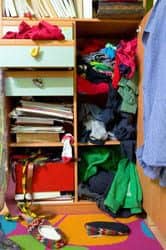By C. Wayne Hibbs, PhD, CCE

Definitions
The first object of our analyses was to reconcile the different definitions for the end of life of medical equipment that are used by the owners, users, and service support staff. Justification for replacement of equipment was often made on an EOL condition. But different groups used different definitions for EOL and its severity.
The product EOL is the point when a manufacturer sends out a notice letter to all known owners stating the date for end of production of a specific model. The intent of the notification is to encourage owners who have standardized on a specific model to obtain all they may be planning to purchase before a specific date. This notification is typically used with infusion pumps, defibrillators, bedside monitors, or mobile devices. These are only important to maintain standardization and reduce the potential of needing to replace interfaces or large fleets of well-functioning equipment.
The more important support EOL is the time that a manufacturer sends out a notice letter to all known owners stating the date when it will no longer issue service contracts or assure full parts support or software updates for a specific model. This is typically the justification for capital budget replacement requests on major equipment in imaging, laboratory, and central sterile processing.
The final stage of any equipment is the functional EOL, which is the time that spare parts are no longer available from any source and in-house biomed staff can no longer keep an item in safe repair. This is a crisis point if it is an important item such as an anesthesia machine, a portable x-ray device, or a unique laboratory analyzer.
Previous attempts to simplify the definition of EOL have been either financial or technical. The financial EOL was defined as the date of 100% depreciation using the AHA “Estimated Useful Lives of Depreciable Hospital Assets” guide, which is updated every 5 years. Age is accepted by GAAP accounting regulations, insurance companies, and the IRS for equipment use, but it really has very little application to specific vendor and model equipment. The technology EOL is even harder to define because there is no published reference, only the experience of users, vendors, or service providers. In this case, a functional 16-slice CT scanner that is 6 years old may be considered EOL by a vendor who is now selling only 64-and 128-slice CT scanners. But as a CT scanner for biopsy and treatment planning applications, the unit could have another 6 years of service without reaching a support EOL. In both the financial and the technology EOL models, there is no Lean principle that supports the replacement of a unit with a newer item.
The Goodwill Closet
To explain these differences in the EOL analysis, I often use the Goodwill closet analogy:
The Indiana Goodwill organization has an excellent public service announcement (easily found on YouTube as “Goodwill Closet Audit”) that I call the Lean Closet Program. In this 60-second ad, the Goodwill donation truck driver opens a closet and starts to rearrange the clothes. After a lot of items are rearranged, he turns to the camera and starts his pitch for donations:
“In your closet, there are clothes you wear, clothes you don’t wear, clothes you shouldn’t wear, and clothes you can’t wear. Goodwill will take the last three to give you room to buy more of the first.”
In the closet inventory model, the clothes you wear can be divided into dress, casual, and sports clothing. These types can be further subdivided into spring, summer, fall, and winter wear. In health care, we can categorize inventory into inpatient, outpatient, and clinic applications. We could further divide each type of equipment into monitoring, diagnostic, therapeutic, or hybrid devices.
The clothes you don’t wear might just not be your style any longer. In medical equipment, that would be technology that is no longer requested but still functions—anything from an infusion pump to an endoscopic camera. The item was often purchased for a specific physician who is no longer there, but it is still on a service contract or maintained by the biomed staff. The biomed staff, in fact, may be the only people who operate the unit from one PM inspection to the next.
The clothes you shouldn’t wear might be, say, leather pants with fringe. In medical equipment, that would be technology that is still in routine use because of historic policies, but that has been replaced by newer technology. One doctor may still order a lab test that he or she has relied on for 20 years, but that test has been replaced by a new DNA probe analysis that is much faster and more accurate. Many labs and most surgery departments have at least one analyzer or instrument set maintained for one specific physician’s preference.
The clothes you can’t wear may have fit you 30 pounds ago, but don’t now. In medical technology, this could be compared to the old patient beds in the psych unit that still have manual cranks and are limited to 275-pound patients. The nursing staff thinks that manual beds are used to prevent patients from getting hurt if entangled in the electric bed, but over 20 years of design has now gone into electric bed controls. Indeed, it is often the older equipment still in use that presents the greatest hazard to patients.
In deciding what you should and should not keep, the “1-year rule” applies. If you haven’t used it in the last year, you do not need it anymore. This applies to medical equipment and support just as much as to your running shoes.
Facility Analysis
We have recently documented EOL and capital budget master plans for two different health care systems. One system had four facilities with a total of 1,363 beds; the other had five facilities with a total of 1,021 beds. The two had between 19,000 and 24,000 asset tags in their active inventories for equipment with a capital value of more than $1,000. Because of the various ages and accessories included in the original purchases, we have valued each item at its actual replacement value (AVR), as is done in premium replacement insurance policies. The AVR is the current cost to replace the item, not the original or the depreciated book value. This resulted in a capital equipment value of $115,000 per bed for one system and $121,000 per bed for the other system. A third health care system declined to have their very similar results published.
Performing the Goodwill-closet style Lean analysis on each system displayed identical results when rounded to a 5% variance:
- Equipment that should be retained and maintained equaled 80% of the inventory.
- Equipment that could be used, but is not in use, equaled 5% of the inventory.
- Equipment that was still in use, but shouldn’t be, equaled 10% of the inventory.
- Equipment that was active inventory, but not in service, equaled 5% of the inventory.
This demonstrated that while 90% of the equipment was still being used, 10% was being serviced but not used. The 10% that was still being used, but shouldn’t be, created an increased liability in patient care. The worst offenders were obsolete anesthesia machines, beds with frame failures, back-up surgical equipment, and ethylene oxide sterilizers.
The maintenance of these items was also identical among health care systems when rounded to a 5% variance:
- Equipment under warranty or extended service contract equaled 20% of the value of the inventory.
- Equipment maintained by the biomed department with parts-only costs equaled 40% of the inventory.
- Equipment maintained by a “first-call biomed” service agreement equaled 30% of the inventory.
- Equipment maintained in a “reagent rental” or “supply purchase” plan equaled 10% of the inventory.
This finding demonstrated that in-house biomed departments are providing excellent on-site response and service for 70% of their equipment. However, there is 30% of the inventory under warranty or reagent rental maintenance for which they have little to no control. Furthermore, of the 40% of the inventory for which the biomed department was totally responsible, the parts and service expenses included the entire 20% of unused inventory that should be removed from service to make space for equipment that would actually be used.
This analysis shows that the biomed department is often caught in a catch-22 situation. While they have to track and document 100% of the medical equipment, they only service 70% of the equipment. Of that 70%, only 50% should actually be in service. The remaining 20% should be removed from service. But the biomed department does not establish the capital equipment budget needed for the ongoing master plan to replace equipment based on an EOL determination. This is a perfect opportunity to introduce Lean equipment management into the capital budget process.
Conclusion
The existing process results in increased staff utilization in tracking, inspecting, and documenting equipment that either is not in use or should not be in use. As health care organizations attempt to introduce Lean processes, the result is often the common practice of creating a strong purchasing process “gatekeeper” for budget, evaluation, selection, and acquisition of new technology. But the “housekeeper” for the EOL determination, disposal, and removal of obsolete supplies and accessories is more often a “hoarder” who would rather save and store than keep the inventory clean and manageable. This hoarder mentality is the natural enemy of any successful Lean process.
The Lean equipment management process must control and document the entire cycle of determination of need, selection, funding, monitoring of utilization, support, maintenance and end-of-life product retirement. As in the Goodwill Closet Audit, identifying and removing the 20% of medical equipment not needed reduces overall service costs and provides funds for more new equipment. 24×7 Service Solutions September 2013
C. Wayne Hibbs is president of LifeStructures Technology Planning, Indianapolis, and a member of 24×7’s editorial advisory board. For more information, contact [email protected].




